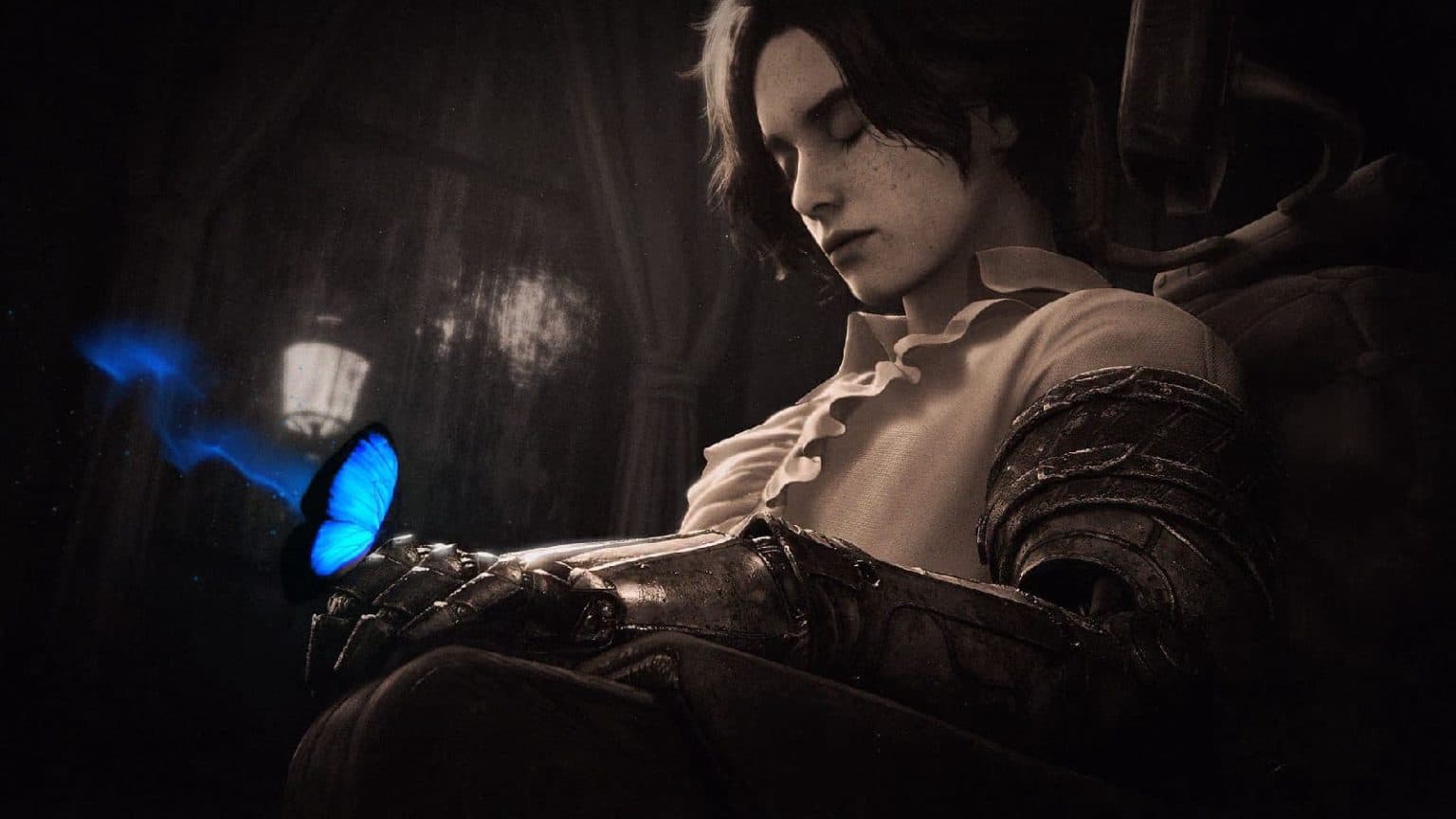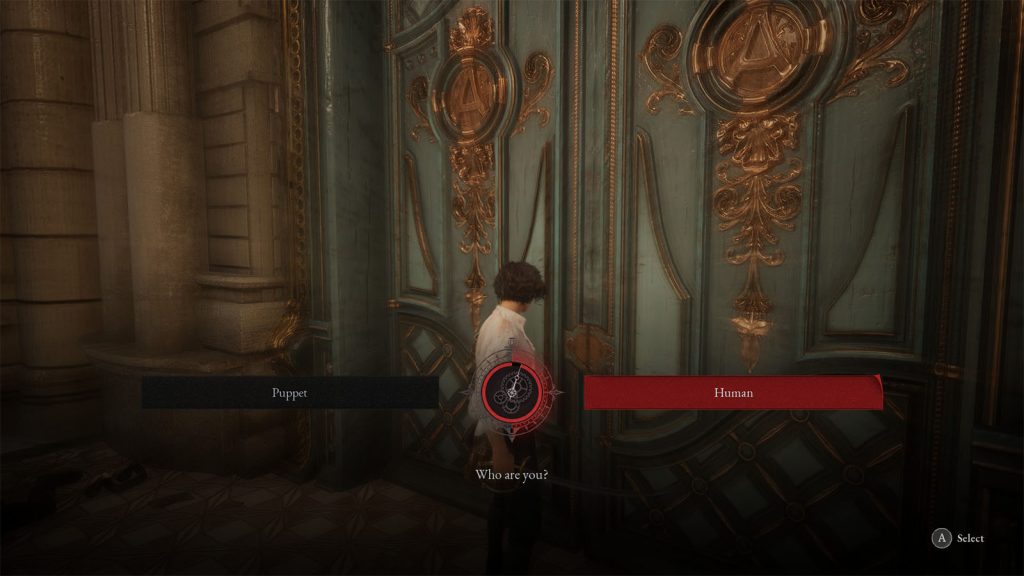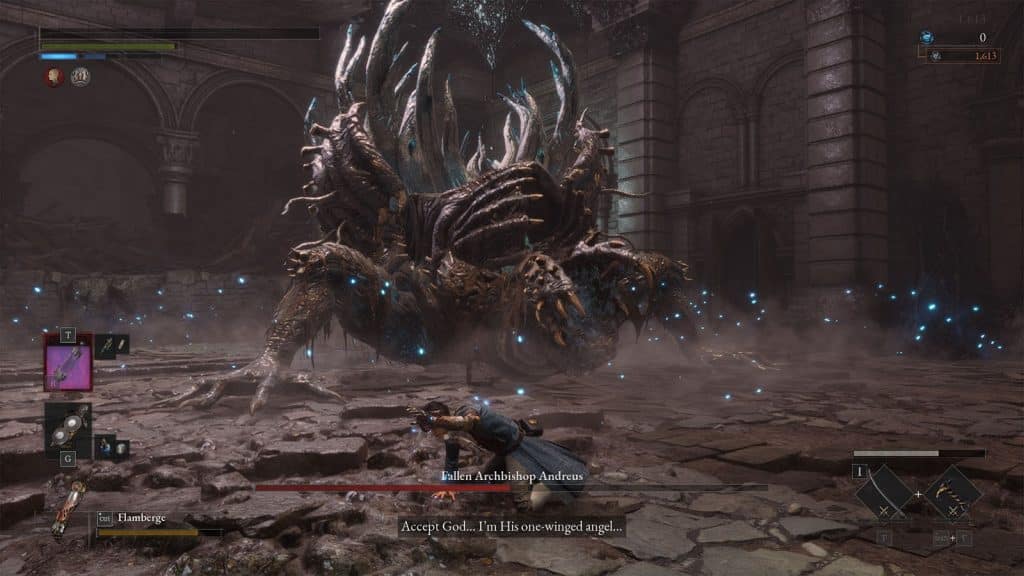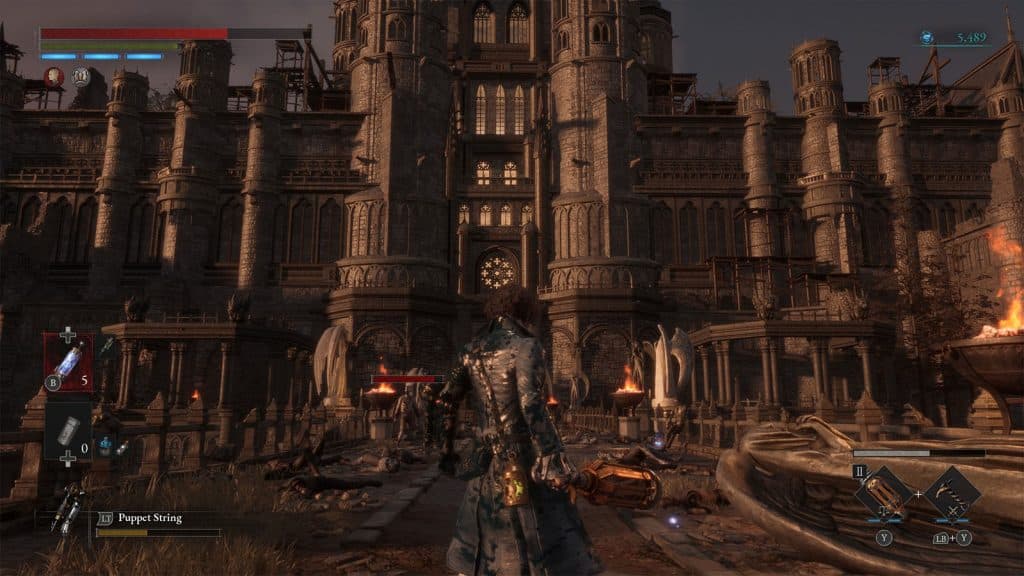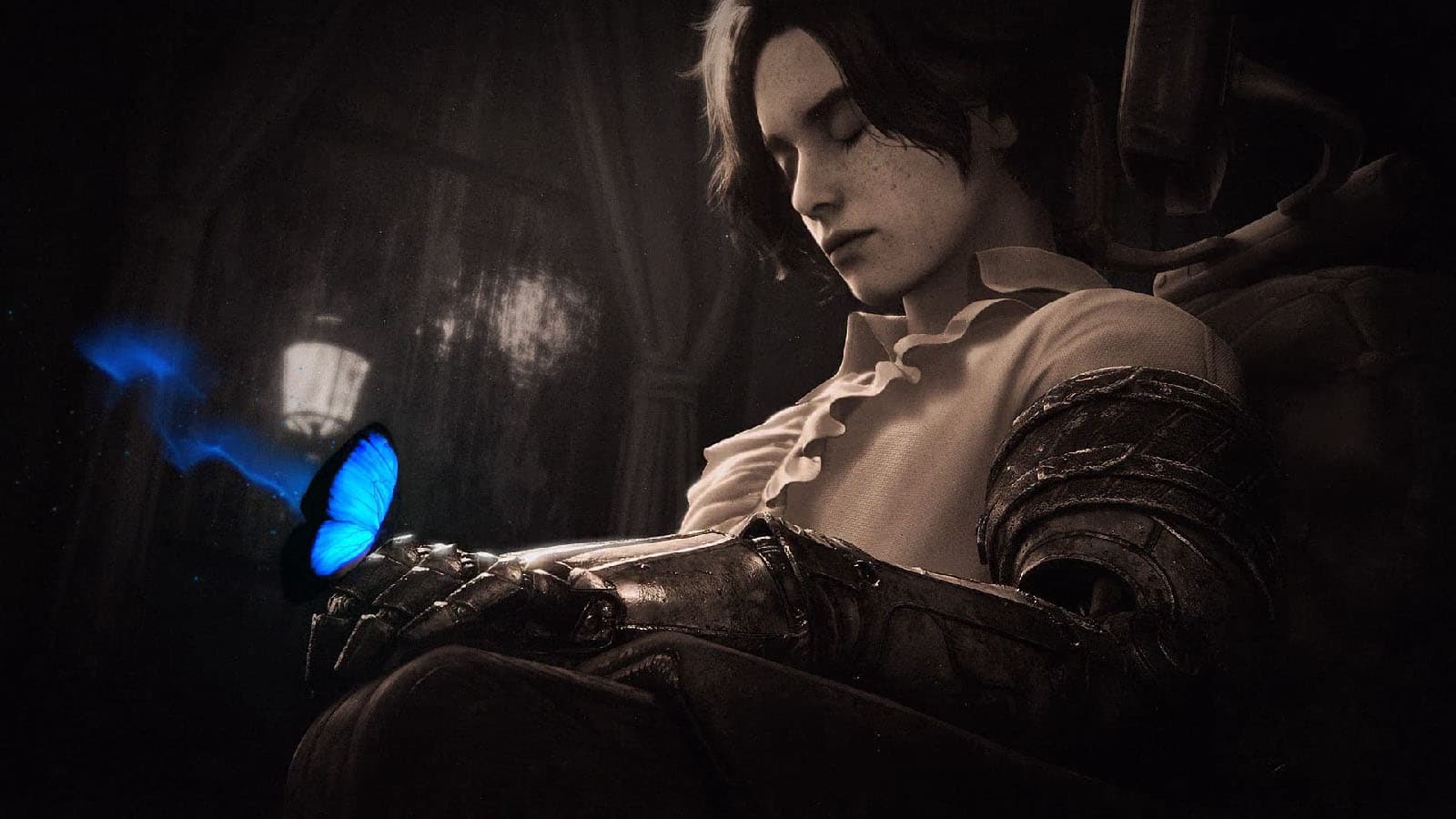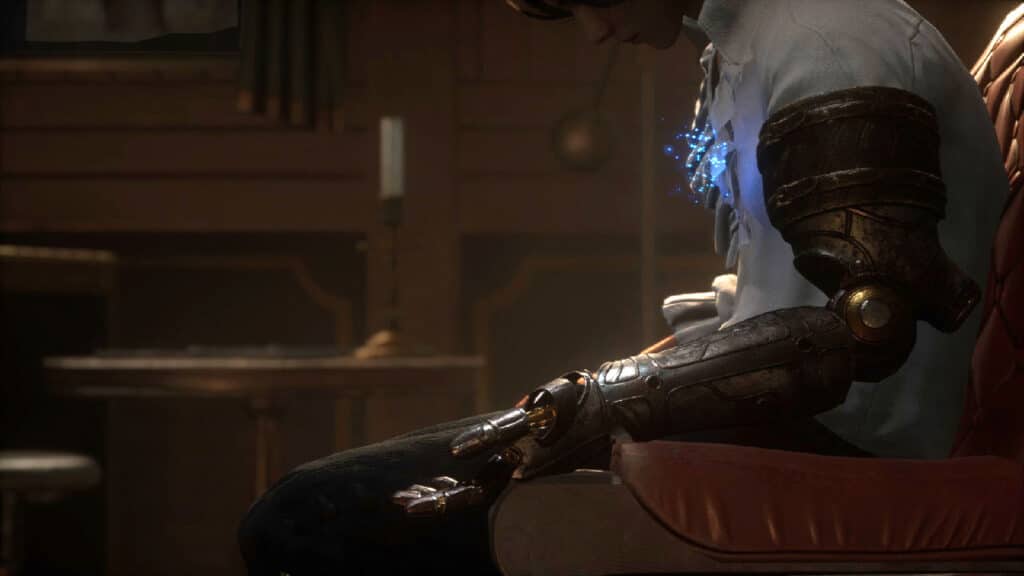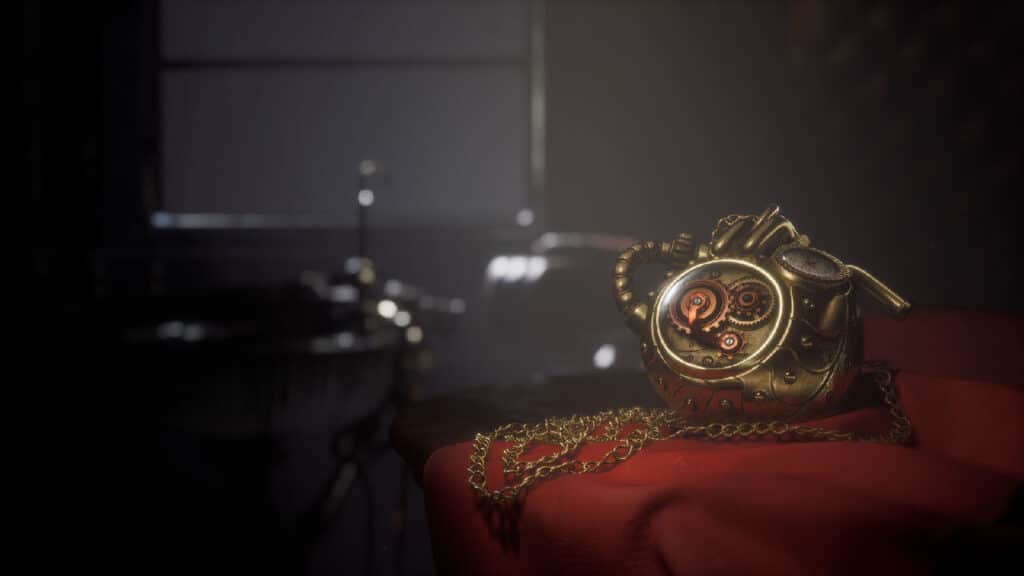Lies of P is a single-player action soulslike game made by Neowiz Games and Round8 Studio that is inspired by the children’s fairytale Pinocchio, but set in a world where darkness has befallen on the land, and the puppets that were made to help humanity have turned against humans. As a last resort, the humanoid puppet known as P was specially made by Geppetto to not be affected by whatever made the puppets berserk, and it’s now up to P to save the city.
Honestly, I’m not a huge, huge fan of the soulslike genre, but Lies of P got my attention when I first caught wind of it, mainly because I am interested about adaptations and I was curious to know how they were going to execute it. Seeing the trailers and thanks to the demo, we got to get a taste of what the game offers when it comes to the world and its gameplay, and so far the game looked pretty good. But did the game manage to hold up to the expectations set by these teasers?
We’ll start off with its plot and how it is connected to the lying mechanic in the game. The reason why P was deemed as a special kind of puppet is that, unlike any other regular puppet who can only tell the truth, P has the ability to lie. This same ability is the reason why P did not go berserk while the rest of the puppets did. This puts a stark contrast to the widely known part of the fairytale’s story where Pinocchio is dissuaded from lying, or else his nose will grow. In this game, P is encouraged to lie for the sake of humanity.
Because of this lying mechanic, the game ends up with multiple outcomes to scenarios and multiple endings which would depend on how many truths and how many lies P has done throughout his journey. It also dictates whether or not P will stay as a puppet or turn into a real boy. It is an interesting thing to see since this mechanic starts off as inconsequential at first, with the first option actually forcing you to actually lie, but then it grows more complex as more branches start to form that could really affect the proceeding experience.
There were definitely times in the game where I second guessed my own choices and tried to rationalize and decide if I should still uphold the lie, even though it appears that telling the truth appears more beneficial in the long run. But since once you get to the point where the options are presented under a time limit, and there’s no way to reload a save or keep multiple save files. I just had to go with my gut and go through a new game instead to pick a different route.
At first, from a guide maker’s standpoint, not being able to get a good sense of what the outcomes are is quite inconvenient and I definitely viewed the experience like that at first. But when it all started to get complicated, this limited “only 1 save file” made more sense because it adds a layer of anxiety on top of the action, and it’s part of the whole experience, nonetheless. It’s also great that the act of lying doesn’t necessarily mean that the outcome that you’ll experience will be the “right” or the “easier” one.
As for the gameplay, it’s what you can expect from a soulslike game, which is brutal and punishing. It does have the added complexity with its weapon assembly mechanic which gives you some level of customization with the weapons that you get. The weapon assembly basically allows one to pick apart the blade and the handle to mix and match them up with the other weapons in the armory. Then there’s the Legion Arms that add another level of customization and serve as both weapons and utility tools. There’s also the usual weapons upgrading, though it is sort of tied to the progression of the game, as materials are often found only in new areas.
The weapons certainly provide different kinds of experiences due to their weights and attack patterns, and they’re done just enough that it would really matter which weapon you take to which boss and what your preferred playstyle is. At first, I felt like I had to always pick the lighter and faster weapons just because it made studying the attack patterns way easier, but then the heavier weapons become more of a viable option once I got more comfortable with how the enemies move.
For the combat part, there have been some initial concerns from other players about the dodging being a bit underpowered. It did feel like the dodging was kinda wonky at some parts, and so at the start, I tried experimenting with the dodge rolls, but I ended up just practicing and honing my parries instead and stuck with it throughout my playthrough. It might get tweaked a bit in the future, but for now, I’m satisfied with how the parry works. The parry window is tight enough, that it would feel like it sucked when I thought it should have been a perfect guard, but then it would also felt just right when it did connect. I just had to really pay attention to the moves and be aware about any follow-up attacks; fair enough and fully expected when playing such a game.
As for the progression apart from the story itself, the game’s cyclical pattern through the chapters does start to become obvious right around chapter 3 where it’s basically you start the chapter, go through a slightly tough boss just right before the first save point, then this repeats for the second and third save point until you reach the final one just outside the final boss’ lair. It does get broken sometimes by minor side quests and additional mechanic unlocks.
Going back to progression, there’s still a bit more freedom to be had in Lies of P when it comes to the choice of encountering certain enemies now or later, which I personally find good. There were definitely times when I had to skip an enemy just because they were too hard to beat with my current build, but then later on, I decided to back track and defeat them, only to find out that they were carrying something that could have made my progression a bit easier or at least a bit more interesting. It wasn’t always the case that I felt like I was progress gated, but it’s more like “overcome the challenges now, or face it later, but *maybe* get a more challenging experience in the interim.”
Moving on to the visuals, I can’t really say much more than they were beautifully done. The deliberate choice of putting the story in a 19th-century setting really paid off well as the theme helped tell a more compelling story than, for example, if it was set in a different era. The level designs were done well, and so were the people and the enemies that you encounter throughout Krat. The visual effects such as in combat were flashy enough, but it wasn’t overly done to a point that they got too distracting. Being inside the hotel really gave the sense of safety with its warmth and brightness, as compared to being outside and on the dark streets of Krat.
If there’s one thing to point out with the visuals, it’s with everything that has to do with the player’s interface. I guess it’s just because of the common theme and setting between most of the popular soulslike games from the past years, but Lies of P’s UI could use a bit more identity, because right now, the game does look like a very well done reskin of a Bloodborne game. Not that it actually makes the game look bad at all, but the game had a chance to have its own unique look that could still be coherent with its overall theme.
The sound design and scores are worthy of a praise as well; they set the mood so well and they go all out when needed. It’s also nice to see that music has been incorporated into the game, not just as something that plays in the background, but as a thing that could also potentially help mold P’s story and ending.
Performance-wise, the game runs well for most mid-ranged PCs on high settings. I did see some assets slowly loading in, but it was usually only during talking with an NPC when I noticed it more, and it’s not abhorrent that it took me out of the immersion.
Looking back at my previous question, did the game manage to hold up to its expectations? Yeah, it sure did. I got what I expected to get: the pain and frustration of having to face enemies and bosses dozens of times; the anxiety coming from the uncertainty whether or not the choice I made would help P or the residents of Krat in the end; the satisfaction of being able to finally defeat those pesky bosses after getting stuck for around three to four hours on each of them; the curious itch to know what’s next and how the story will end up. In short, I genuinely had a fun time through the ups and downs of my experience, and I could say that Lies of P has the potential of becoming one of the names that would immediately be brought up when talking about soulslikes.



